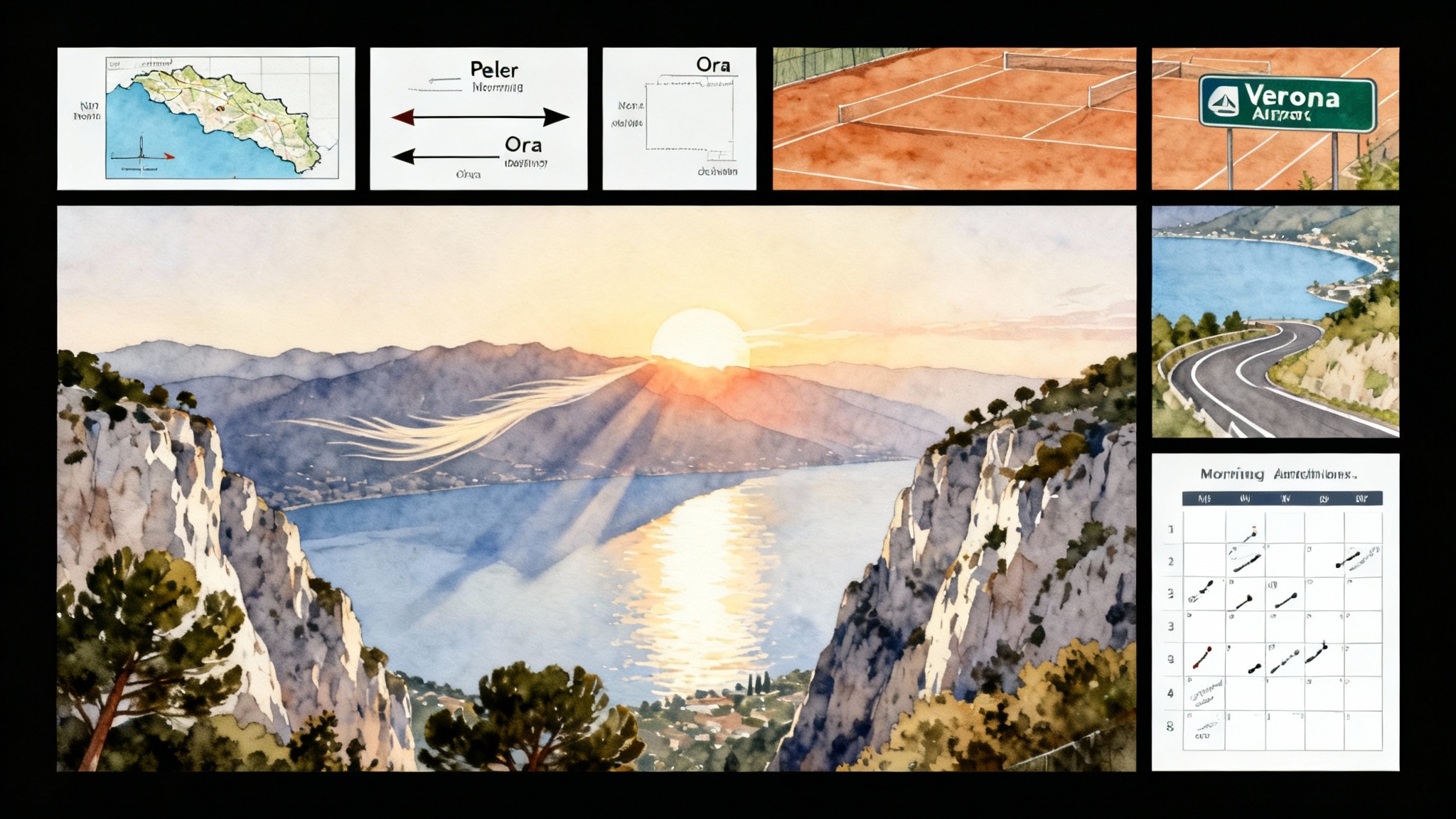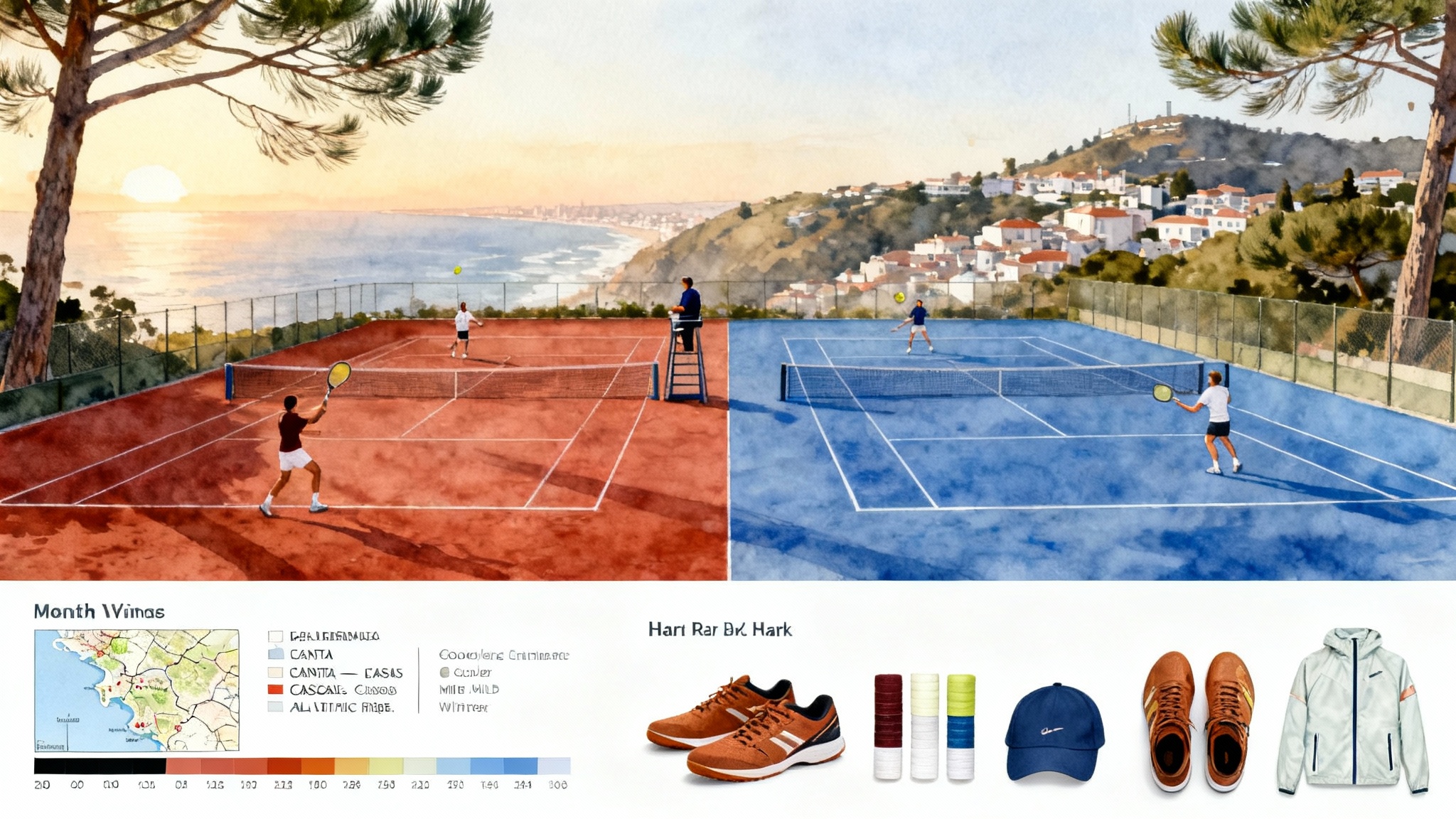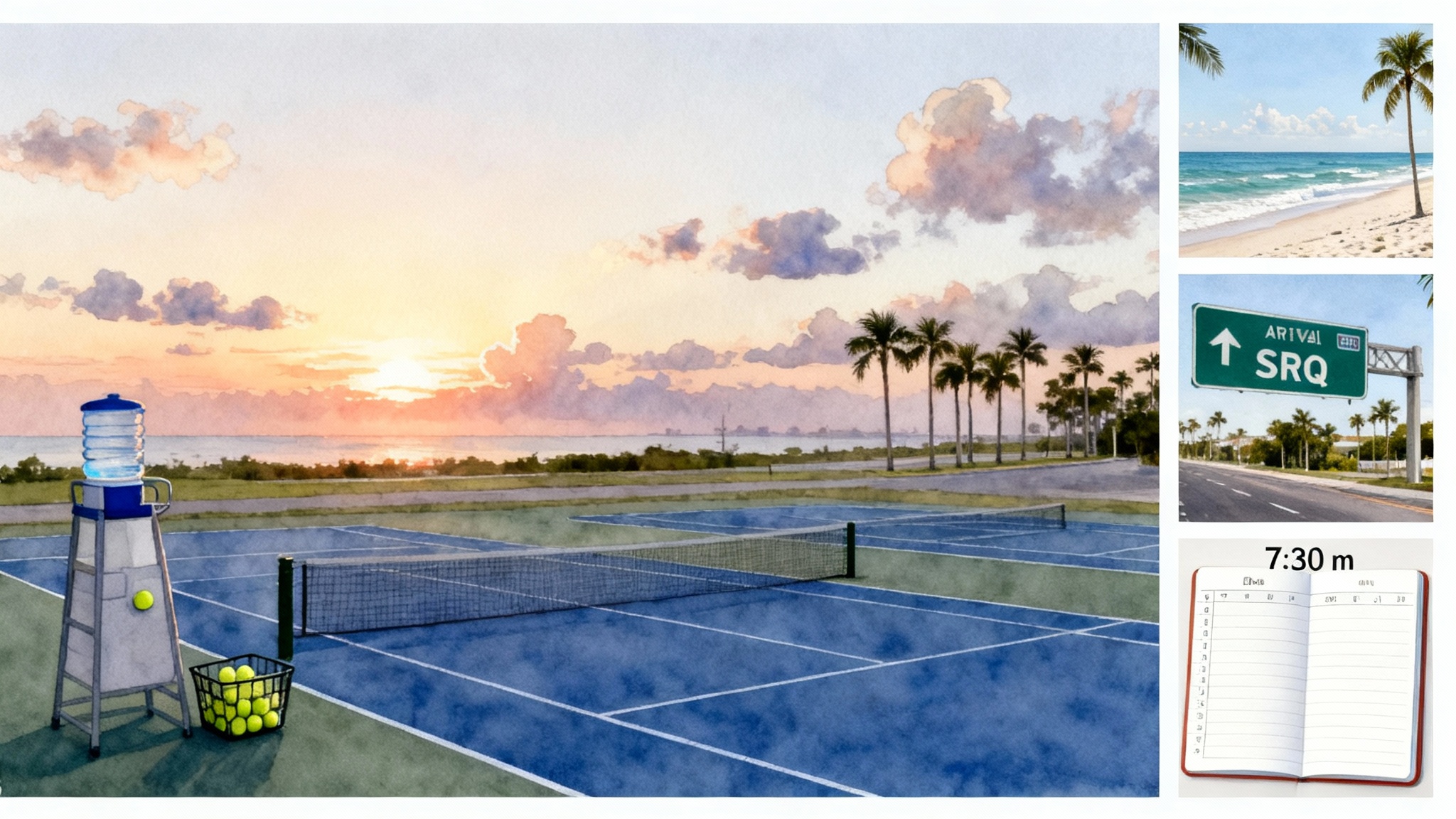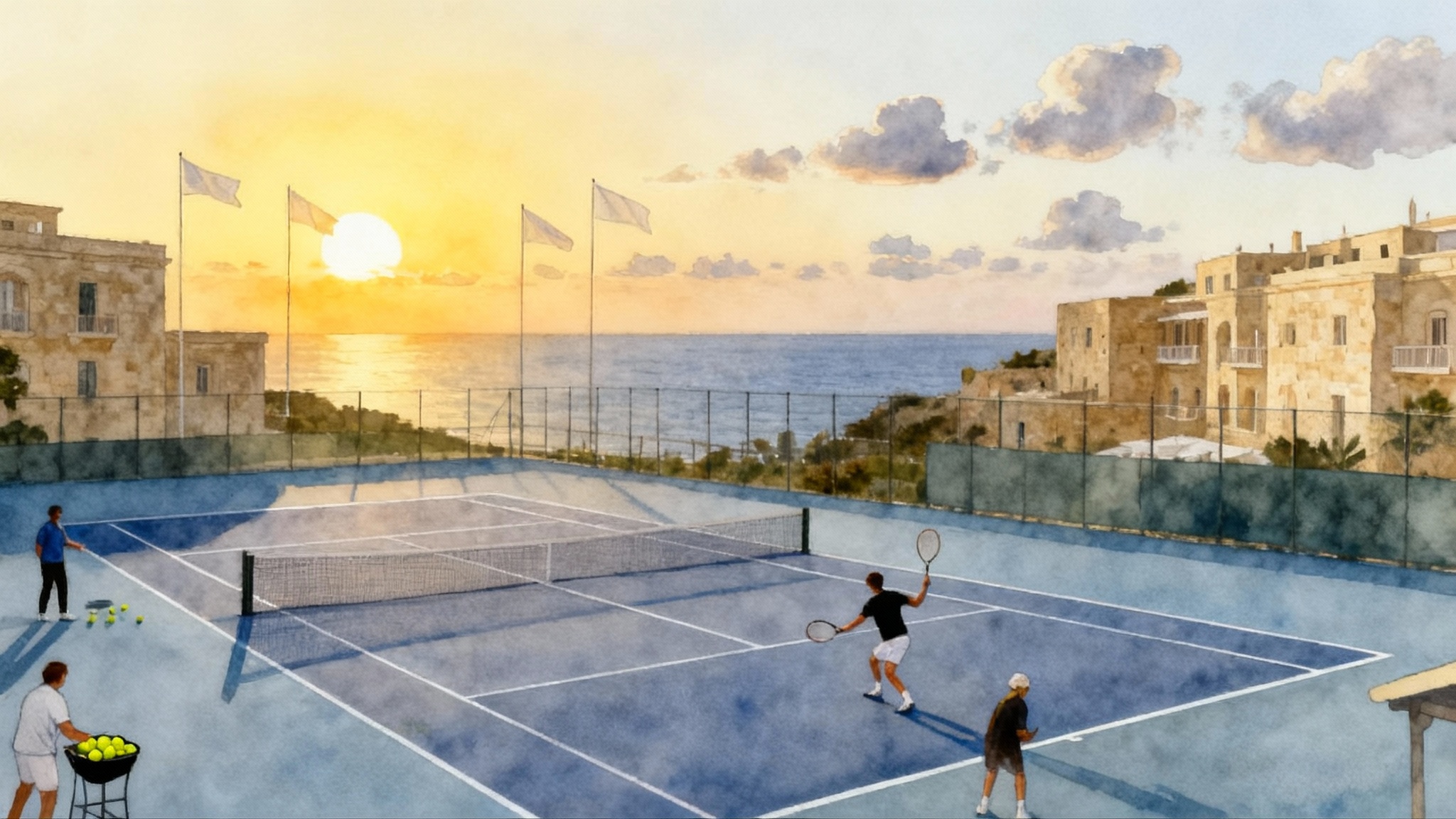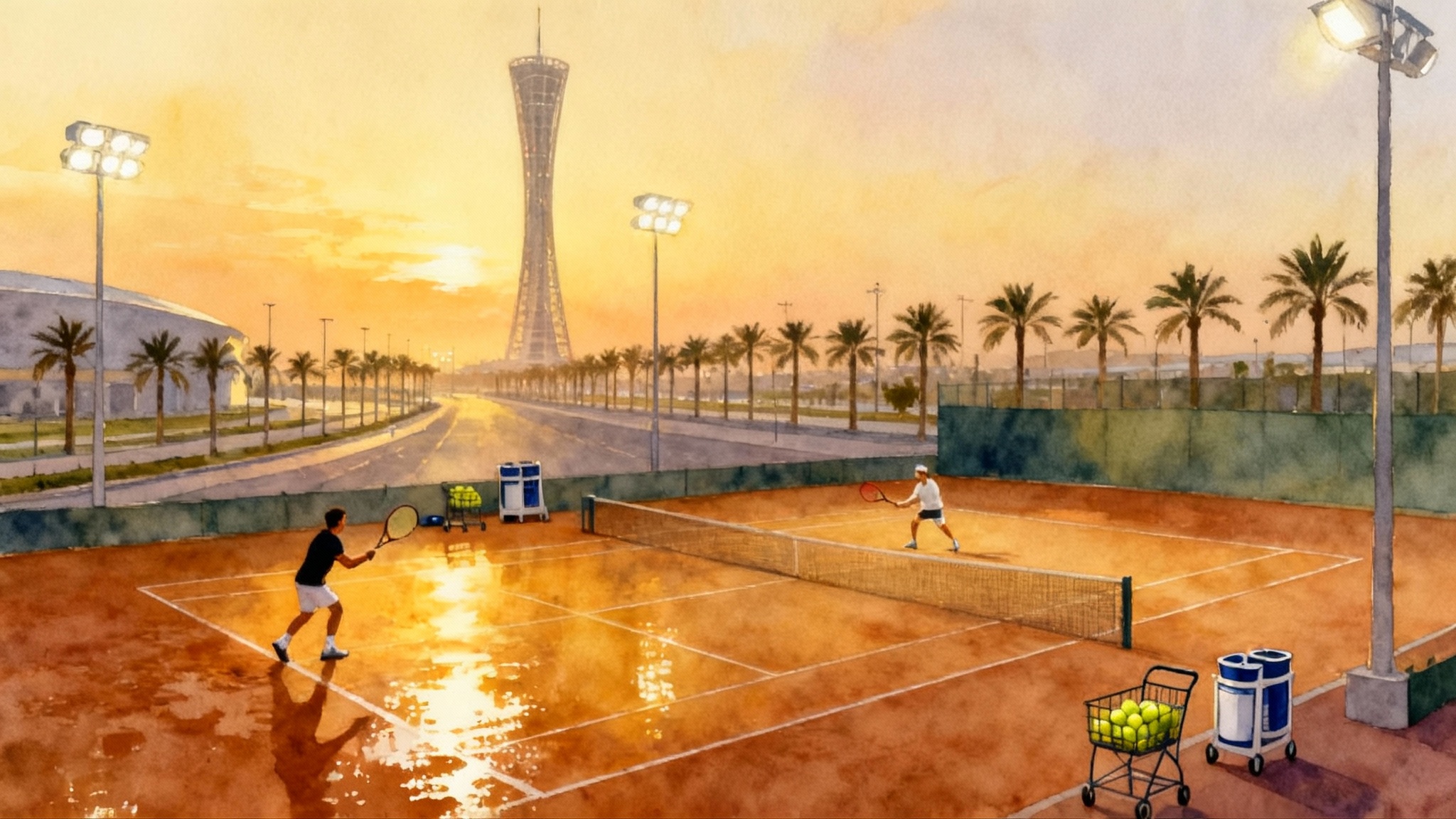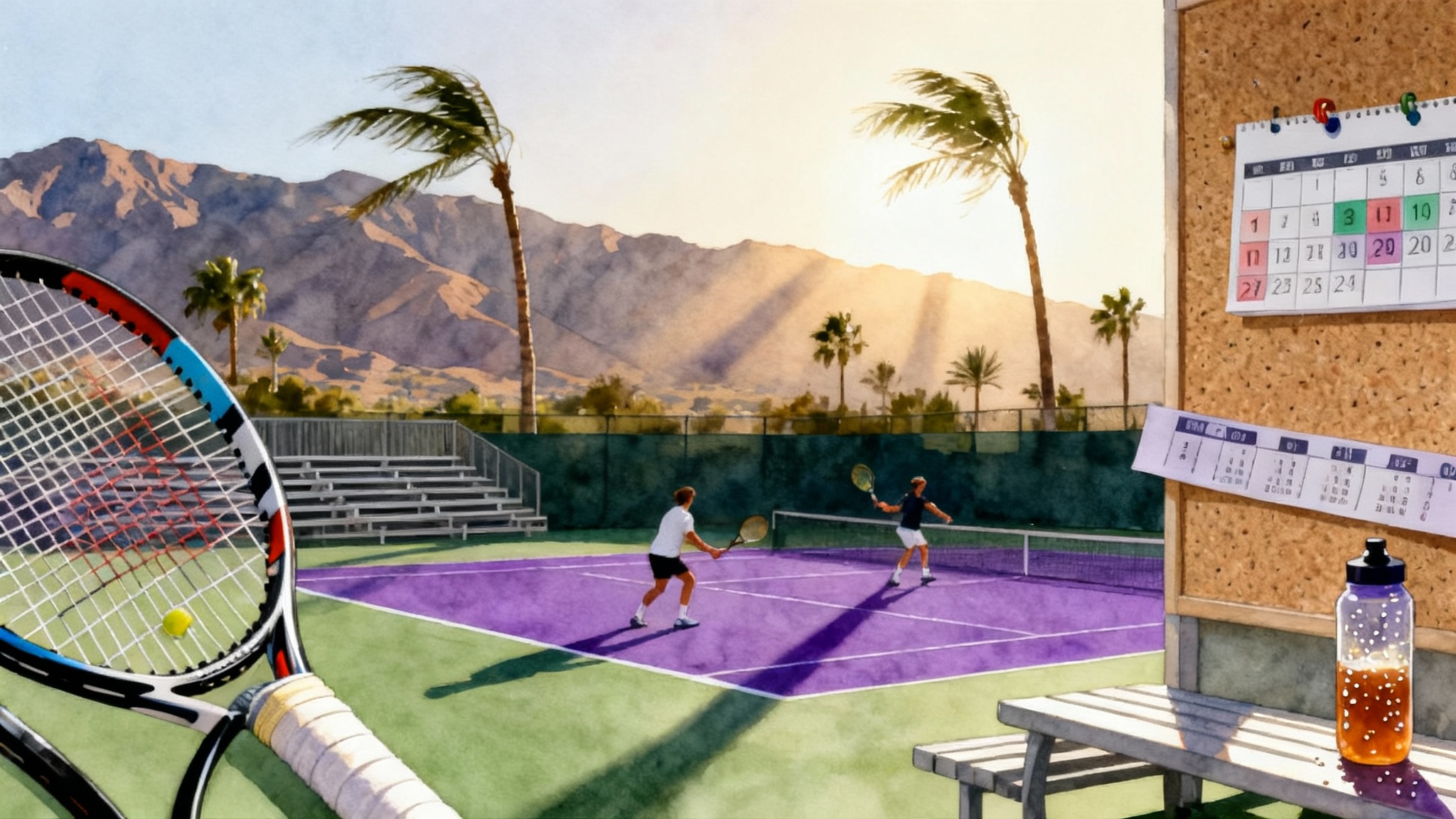India’s 2025–26 Tennis Planner: Delhi vs Bengaluru Guide
Design a year-round, split-season training plan across Delhi and Bengaluru for 2025–26. Use monsoon windows, temperature, altitude, and AQI rules to schedule 3–4 elite blocks, with sample weeks and tournament tie-ins.
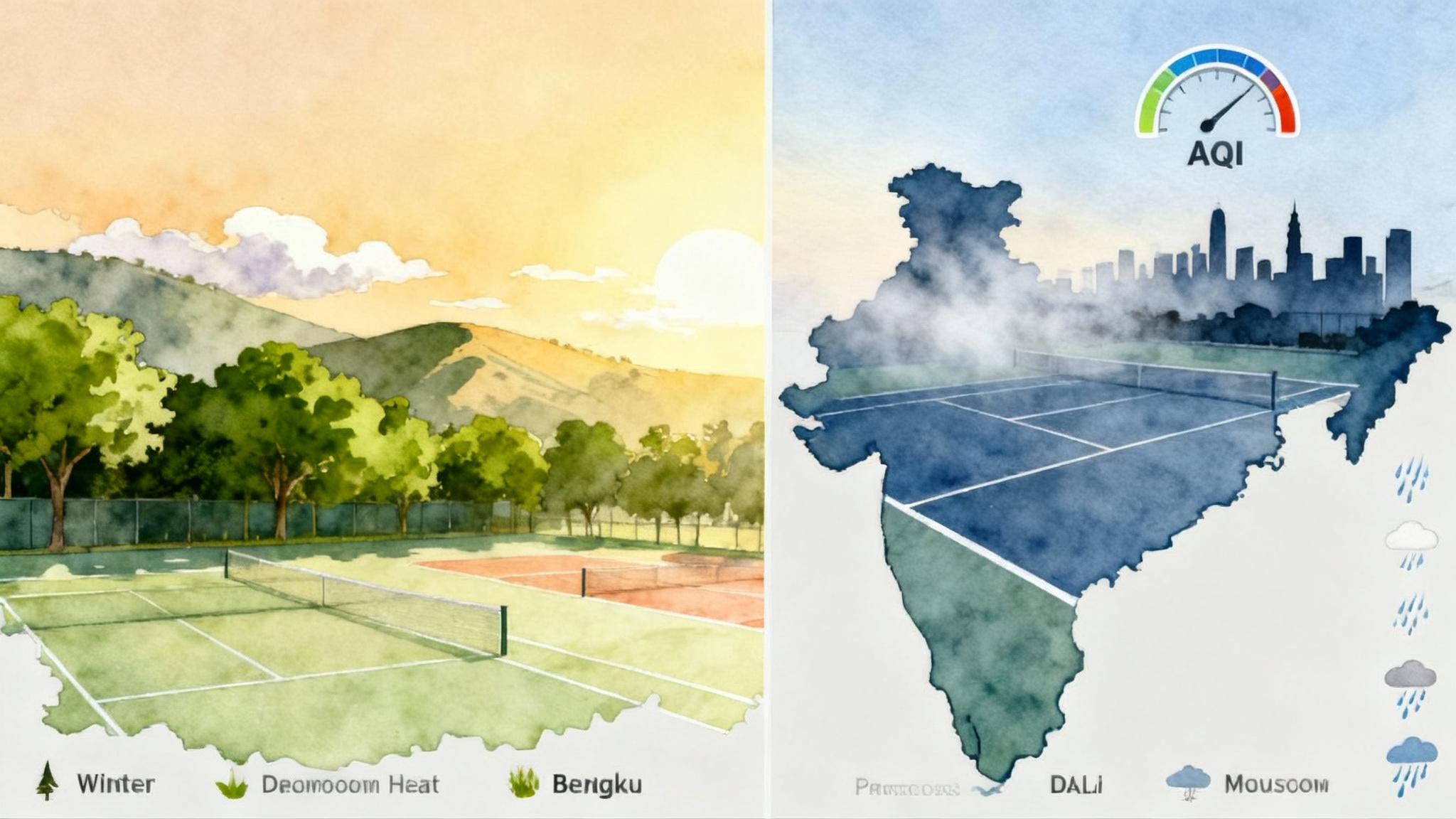
Why split your training year between Delhi and Bengaluru
India is a continent masquerading as a country. The same week that Delhi wakes to fog and 12°C, Bengaluru might be crisp at dawn and springlike by afternoon. That spread is a gift for players and parents who plan ahead. By hopping between North and South at the right moments, you can stack high-quality hours, protect health during heat and pollution spikes, and sharpen specific skills that benefit from altitude, humidity, or cooler air.
This guide maps a split-season plan for 2025–26 that uses Delhi’s dry winter and shoulder seasons together with Bengaluru’s altitude-cooled steadiness. It lays out three to four training blocks, day-part scheduling, air quality contingencies, surface choices, and on-the-ground options at Rohan Bopanna Tennis Academy in Bengaluru plus Delhi day academies Tennis O Holic International and Neelachal Tennis Academy. You will also find travel tips and tournament tie-ins for juniors and adult competitors.
Climate windows for 2025–26 you can actually use
Think in windows, not months. Monsoon onset and retreat matter more than the calendar page.
- Delhi pattern: cool and dry in late December to February, pleasant shoulder season in March to early April, pre-monsoon heat from late April to June, monsoon humidity from late June to September, and a pollution-prone late October to November period due to crop-residue burning and low wind.
- Bengaluru pattern: temperate and relatively stable most of the year, with June to September seeing regular showers, and the rest of the year offering consistent court time. The city sits around 900 meters above sea level, which speeds the ball slightly and rewards timing and footwork discipline.
For deeper background on seasonal timing, check the IMD monsoon climatology. Use it to sanity-check the windows below, then finalize your booking.
The 3–4 block plan at a glance
-
Block 1, Bengaluru pre-season: October 20 to December 10
- Why: steady weather, altitude-assisted ball speed, reliable court time before Northern air quality issues peak.
- Goal: build base fitness and timing, test string setups for altitude, accumulate volume without heat stress.
-
Block 2, Delhi cool-season push: December 26 to February 20
- Why: comfortable daytime temperatures, the sun helps with recovery, easy access to local match play.
- Goal: add intensity and mid-day match simulations, reinforce serve mechanics in denser air for control.
-
Block 3, Bengaluru heat bypass: April 5 to May 25
- Why: avoid Delhi’s pre-monsoon heat, keep volume high with quality ball striking.
- Goal: speed and transition work, more on-court time with less heat strain, tune-up for late spring competitions.
-
Optional Block 4, Delhi post-monsoon shoulder: September 15 to October 10
- Why: shoulder window before potential late October pollution spikes, good for a shorter block of match play.
- Goal: competitive reps, specific tactical projects, school-holiday alignment for juniors.
Adjust a week forward or backward as school calendars, exams, and local tournament postings solidify.
Morning and evening scheduling that respects heat and air
Plan the day, then plan the drills. In both cities, mornings and evenings are your anchors, but the emphasis shifts by season.
-
Delhi, December to February
- On-court: 10:00 to 12:30 and 14:30 to 16:30. Avoid the chilliest dawn hours to help muscles and lungs.
- Strength and conditioning: 08:30 to 09:45 indoors or in filtered-air gyms.
- Tactical video or study: 18:00 to 19:00.
-
Delhi, March to early April
- On-court: 07:00 to 09:30 and 17:00 to 19:00. Heat begins to build after 10:00.
- Strength and conditioning: 09:45 to 10:30 or 19:15 to 20:00.
-
Bengaluru, most months
- On-court: 07:00 to 10:00 and 16:00 to 19:00. Rain is more likely in late afternoons during monsoon months, so front-load mornings in June to September.
- Strength and conditioning: 10:30 to 11:30, mobility and activation 15:15 to 15:45.
Hydration and recovery rules to hard-code
- Pre-hydrate 500 to 700 milliliters with electrolytes 60 minutes before first ball.
- Replace 1 liter per hour in hot spells, 700 milliliters per hour in cooler sessions.
- Put 15 to 20 minutes of shade and shirt change between sessions, even if you feel fine. Heat stress sneaks up on fit players.
AQI contingencies that protect training quality
Write an air quality policy before you book courts. Make it binary enough that coaches, parents, and players do not debate it every morning.
- AQI under 100: normal training.
- AQI 100 to 150: reduce volume by 20 percent, longer breaks, keep sessions under 90 minutes.
- AQI 150 to 200: cut heavy conditioning, move strength to indoor filtered space, keep on-court to 60 minutes with technique focus.
- AQI 200 to 300: no outdoor court work for children or athletes with asthma, adults shift to indoor conditioning and video review.
- AQI over 300: shut down outdoor activity, reschedule or relocate.
Practical moves:
- Book accommodation with HEPA filtration or bring a compact purifier for the bedroom.
- Keep N95 masks for transit and warm-up jogs when AQI is moderate.
- If you own a smart watch with heart rate and perceived exertion logs, expect higher heart rates for the same workload when AQI rises. Reduce targets accordingly.
Surface choices and how to tune equipment
- Delhi: you will find acrylic hard courts, synthetic surfaces, and pockets of clay. The denser winter air slows the ball a touch, good for serve and return fundamentals and longer point construction.
- Bengaluru: altitude plus many medium-pace hard courts means a faster ball through the air, a little more jump off the strings, and more reward for early preparation and compact swings.
String and shoe checklist
- In Bengaluru, consider increasing string tension by 1 to 2 kilograms for control or switch to a slightly stiffer poly.
- In Delhi winter, drop tension by 0.5 to 1 kilogram if the ball feels dead, or switch to a livelier cross string.
- Keep one pair of grippier outsoles for clay or dusty synthetic and one pair for clean acrylic hard.
On-the-ground options in each city
The following are practical bases to build your blocks. Coordinate directly with each academy to align program level, court availability, and coaching slots.
- Bengaluru: Rohan Bopanna Tennis Academy, a high-performance environment with a strong doubles and net-play heritage and consistent court access.
- Delhi: Tennis O Holic International, a day-academy model with structured drilling and sparring sessions, useful for after-school blocks.
- Delhi: Neelachal Tennis Academy, another solid day option for technical work and match play in northwest Delhi corridors.
Sample week at Rohan Bopanna Tennis Academy, Bengaluru
This is a template you can run without breaking school or work weeks. Adjust for age and hours cleared by the staff.
-
Monday
- 07:00 to 07:20 dynamic warm-up, band activation
- 07:20 to 08:40 serve plus first ball patterns, deuce and ad targets
- 08:40 to 09:40 baseline tempo, two cross one line, approach plus volley
- 10:30 to 11:15 lower-body strength, trap-bar deadlift focus, single-leg control
- 16:30 to 18:00 transition games, two-up two-back, doubles instinct work
-
Tuesday
- 07:00 to 09:00 crosscourt forehand pace ladder, inside-out footwork, short ball punishments
- 10:30 to 11:15 shoulder durability, scapular control, rotator cuff circuit
- 16:00 to 17:30 point play, first four shots only, race to 21
-
Wednesday
- 07:00 to 08:30 return of serve series, blocked to random
- 08:30 to 09:30 net play chains, poach timing, overhead movement
- 10:30 to 11:10 mobility and breathwork
- 16:30 to 18:00 sets or supervised match play
-
Thursday
- 07:00 to 08:50 live rally tolerance, depth discipline, no lines
- 10:30 to 11:20 upper-body strength, push and pull, eccentric focus
- 16:15 to 17:45 doubles patterns, I-formation calls, signal practice
-
Friday
- 07:00 to 08:30 serve speed and placement, targets and second-serve variety
- 08:30 to 09:30 transition drills, backhand slice set-ups
- 16:00 to 18:00 match play with constraints, serve plus two, return plus one
-
Saturday
- 07:00 to 08:30 fitness circuit, court intervals, med-ball throws
- 08:30 to 10:00 competitive games, king of the court, 10-point tiebreakers
-
Sunday
- Recovery, light hit or family time, equipment check, stringing, planning next microcycle
Why this works here: the altitude rewards aggressive first-strike tennis and net instincts, areas RBTA coaches can layer into your week without losing baseline volume.
Sample day blocks in Delhi
Day-academy weeks fit well around school and office hours. Use the cool-season daytime window in winter and the morning or evening in shoulder seasons.
Tennis O Holic International, cool-season sample day
- 09:45 arrive, mobility and band work
- 10:00 to 11:15 drilling focus, forehand neutral to offense, depth plus height rules
- 11:15 to 12:00 serve plus return, percentage targets by zone
- 12:00 to 12:30 cool-down, notes and video review
- 16:00 to 17:30 supervised point play or sparring partner
- 18:00 strength session off-site in filtered air, 45 minutes
Neelachal Tennis Academy, shoulder-season sample day
- 06:40 arrive, activation, hydration check
- 07:00 to 08:20 live-ball patterns, backhand patterns and defense to offense
- 08:20 to 08:40 serve targets
- 17:15 to 18:45 match play, one set with coaching changeovers
If AQI rises above your preset threshold, move the second session to indoor conditioning and technical video. Protect the lungs and preserve the learning.
Travel and logistics between the two hubs
- Flights: Bengaluru to Delhi is roughly two and a half hours. Book morning flights to reduce thunderstorm and congestion delays.
- Airports and ground: Both cities support app cabs. In Delhi, the Metro is useful if you travel light. In Bengaluru, plan extra time during peak hours.
- Where to stay: pick within 20 to 30 minutes of courts in traffic. In Delhi, add air filtration to your checklist. In Bengaluru, prioritize walkable meals and a quiet lane over central nightlife.
- Gear: carry two frames in hand luggage, strings and tools in checked baggage. Have a list of nearby stringers with same-day turnaround. Keep spare overgrips and a second pair of shoes.
- School and work: set a standing video check-in time with school tutors or managers so training days do not drift. Protect sleep before you add volume.
Tournament tie-ins for juniors and adults
Calendars move, so anchor to typical months, then confirm final postings. Juniors can target local All India Tennis Association events and International Tennis Federation Junior tournaments during long blocks, while adults can slot in Universal Tennis Rating prize money or league events.
-
Bengaluru block ideas, October to December and April to May
- Use weekend open tournaments or Universal Tennis Rating match days to turn training into pressure reps.
- If you need international points, scan the ITF tournament calendar three to four months ahead and then build your microcycles around the nearest events.
-
Delhi block ideas, late December to February and September shoulder
- Local events can be scheduled across practice partners and day-academy sparring. Use midday matches in winter to simulate realistic ball flight and speed.
Budget the week before any event for slightly lighter volume, heavier serve and return focus, and clay or hard transitions based on the draw.
Coaching coordination and communication
The best split-season plans fail for one reason. The athlete moves cities and changes coaching groups without a handover. Solve this with a one-page technical brief.
- What to include
- Two technical keys you are chasing, for example earlier unit turn on the backhand and more aggressive serve targets up the T.
- Three tactical themes, for example second ball depth, net look on short ball, and return depth to body.
- Red flags, for example shoulder soreness threshold, low back management, or hydration history.
- Contact details for your lead coach in the previous block so the new coach can ask questions.
Share this with RBTA or the Delhi day academies one week before arrival. Ask for confirmation and any tweaks.
Nutrition and recovery in each city
- Delhi winter: warm daylight hours support honest volume. Use simple carbohydrate during long sessions, for example banana and electrolyte mix. Hot lunch, nap if possible, then shorter afternoon work.
- Delhi shoulder season: expect warmer mornings. Move heavier sessions earlier and keep fruit and salty snacks handy. Night sleep is precious, avoid late tennis if school or work starts early.
- Bengaluru most months: high-quality protein options and lighter evening temperatures help recovery. Short evening mobility and breathwork help the next morning’s early start.
Simple recovery non-negotiables
- Two liters of fluids across the day minimum, more on double days.
- Post-session protein within 45 minutes, yogurt and fruit works fine.
- Ten minutes of soft tissue and hips mobility before dinner.
- One digital sunset an hour before sleep.
Putting it all together
- Choose your four windows early, then book courts and accommodation. Protect the plan from drift.
- Build day-part schedules that match the season. Delhi winter favors mid-days, Bengaluru can run two-a-days most of the year.
- Use the AQI policy you wrote. If the number says stop, stop.
- Tune strings and shoes by city. Keep records so you learn faster next season.
- Coordinate coaches with a written brief. Continuity is performance.
- Tie training to competitions, not the other way around. Let the calendar serve the player.
A smart season for 2025–26
A year from now you can look back on a stack of hours that felt almost easy. Not because the work was light, but because the timing was right. Delhi gave you crisp winter days to grind and read the ball. Bengaluru gave you repetition, speed, and altitude feedback without burning you out. Together they form a training loop that keeps you fresh, strong, and improving. Pick your windows, write your rules, and build the year you want on court.
